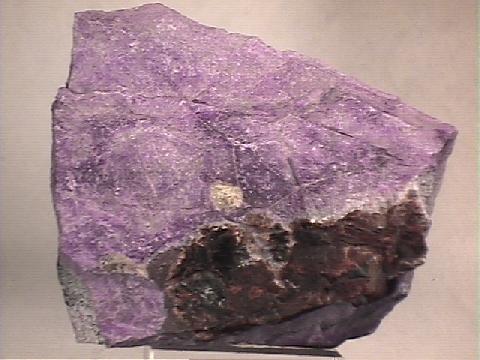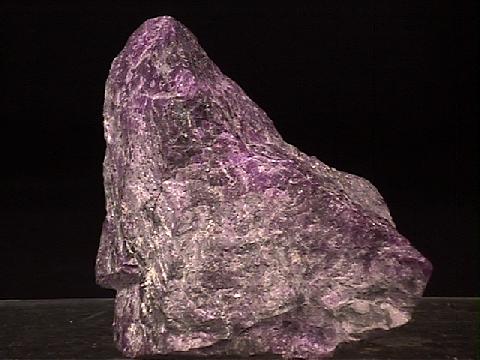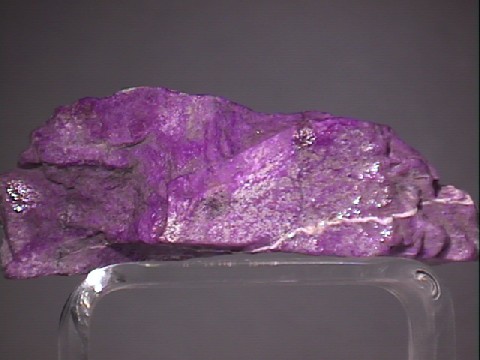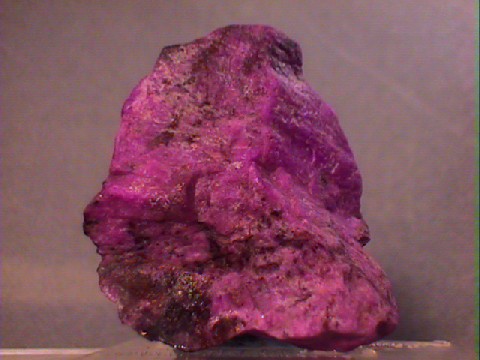 THE MINERAL SUGILITE
THE MINERAL SUGILITE
- Chemistry: KNa2Li3(Fe, Mn, Al)2Si12O30, Potassium Sodium Lithium Iron Manganese Aluminum Silicate.
- Class: Silicates
- Subclass: Cyclosilicates
- Group: Milarite - Osumilite
- Uses: As an ornamental and semi-precious stone used in
jewelry and as a mineral specimen. Specimens
The primary structural unit of sugilite is a most unusual double ring, with a formula of Si12O30. Normal rings of cyclosilicates are composed of six silicate tetrahedrons; Si6O18. The double ring is made of two normal rings that are linked together by sharing six oxygens, one from each tetrahedron in each six membered ring (notice the loss of six oxygens in the double ring formula). The structure is analogous to the dual wheels of a tractor trailer and is shared by other members of the Milarite - Osumilite Group.
PHYSICAL CHARACTERISTICS:
- Color is purple, brown to yellow, pale pink and even black.
- Luster is vitreous to dull or waxy.
- Transparency: Crystals are translucent to opaque.
- Crystal System is hexagonal; 6/m 2/m 2/m.
- Crystal Habits include rare striated prismatic crystals, but specimens are usually massive.
- Cleavage is poor in one direction.
- Fracture is subconchoidal.
- Hardness is 6 - 6.5
- Specific Gravity is approximately 2.75 - 2.80 (average)
- Streak is brown.
- Associated Minerals include pectolite,
poudretteite and polylithionite. - Notable Occurrences include the type locality of Iwagi Island, Shikoku, Japan as well as Mont Saint-Hilaire, Quebec, Canada and most importantly, South Africa.
- Best Field Indicators are color, hardness, luster, streak and locality.









